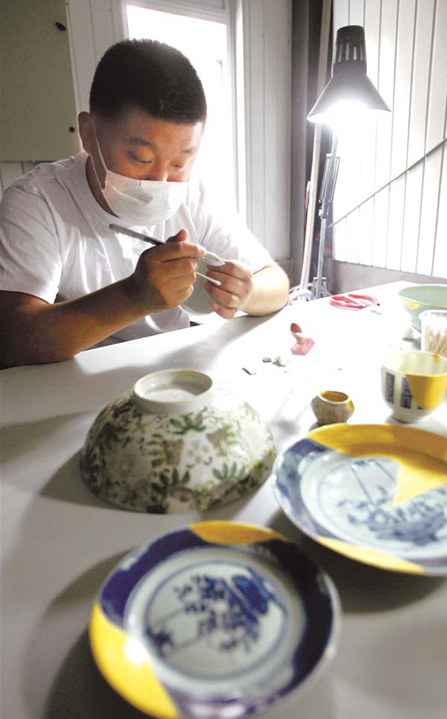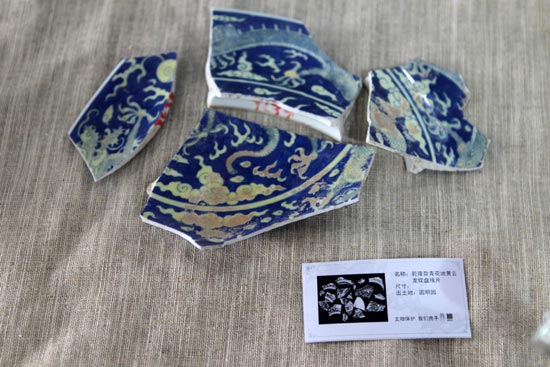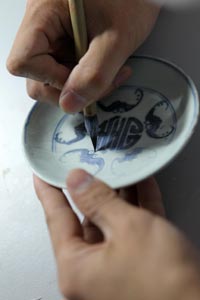Peking University, June 21, 2010: If Peking University witnessed China’s modern history, so did the Yanyuan Garden, once part of the complex of “Garden of Gardens” and now the PKU campus. Today, PKU School of Archaeology and Museology joins the move to bring the lost history back.
Twenty pieces of repaired porcelain are on display at the present-day Yuanmingyuan Park just north of the PKU campus, as part of the commemorations of the day when the historic site was razed to the ground in 1860.
The repaired royal porcelain on show at the park - which is also called Old Summer Palace - had not previously been seen by the public before the show opened on June 18.
“Despite the difficulties, we will manage to repair as many artifacts as possible,” Hu Dongbo, Associate Professor at PKU School of Archaeology and Museology, was quoted as saying.

A technician carefully reconstructs a broken bowl.
The 20 items include plates and bowls of various sizes that were created after "careful selection among around 30,000 fragments unearthed in the park during the past several decades," said Yu Yang, Deputy Secretary General of the China Cultural Relics Protection Foundation, which is responsible along with Peking University for the program.
All of the porcelain once belonged to the royal families of Kangxi, Yongzheng, and Qianlong in the Qing dynasty (1644-1911), according to Yu.

Visitors watch through a window as experts sort out pieces of ancient porcelain.
Among the 20 artifacts, one exquisite qinghua porcelain bowl with dragon decoration, estimated to have been made in the Kangxi period, is in particularly good shape after the careful repair work.

Broken pieces of a bowl awaiting restoration.
"The process is very complicated and takes several months of preparation," Yu told China Daily. "It is made up of several procedures, including selecting the cracked pieces, cleaning their surfaces, matching the pieces (according to the broken edges), gluing them together, and so on," Yu said.
The work is ongoing and is being carried out by around 20 experts from the foundation and from Peking University, with the help of more than 100 volunteers from several Beijing-based universities with majors in archaeology and other related disciplines.
In addition to porcelain, the exhibition includes jade items, stone sculptures, Buddha statues and other items - all originally in various states of distress and all carefully repaired and restored.
The project is continuing and visitors to the historic site will be able to see the experts carry on with their work until Oct. 18 in a repair room near the park's south gate. People will be able to watch the experts for free, said Qian Qian, an official with the foundation.

A technician repairs a bowl.
"It is important to note that the repair work we are doing is reversible. The porcelain can be unglued without damaging the fragments. So, in the future, when we have better technology to deal with these pieces, then we can repair them in a more advanced way," Qian told China Daily.
On Oct. 18, the park will mark the 150th anniversary of the Old Summer Palace being plundered and torn down by a joint army from Britain and France in 1860. The exhibition is one of the commemorative activities.
"The reason that we are doing this is not to remember the hatred but to remember and reflect on our history," said Chen Mingjie, director of the park's managing office. "This park proves war definitely is not the right way to solve clashes between civilizations."
After the Oct. 18 anniversary, the exhibition of repaired relics will probably be sent on a nationwide tour, said Qian.
Reported by: Qin Zhongwei
Edited by: Jacques
Source: China Daily